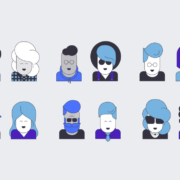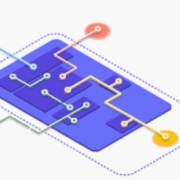Customer Intelligence Platforms Will Spark a CX Renaissance in 2018
In 2017, a increasing number of organizations recognized a fatal flaw in their data & analytics strategy. While their objective was to unify Data-Analytics-Action into Insight Platforms (a term coined by Forrester research), the handoff between data and analytics proved anything but smooth, particularly for customer data, which tends to be housed in a great number of silos. Many orgs struggled with data lakes or customer journey/interaction repositories, unable to join data together beyond simple identifiers provided from legacy customer systems like MDM. The result? Modern data storage populated by legacy matching technology (ugh … what a let down). Most orgs struggled with data lakes that required far too much work to contain a wider customer profile than their MDM-DW combo. That pain is addressed by a new category of software – Customer Intelligence Platforms. It is an emerging type of software and has different project names – Customer Data Lake, Customer 360, Customer Intelligence Systems, and more. But the concept of a CIP is remarkably consistent, from analysts such as Sheryl Kingstone of 451 Research to customer project plans and RFPs. The investment and deployment in Customer Intelligence Platforms is set to explode in 2018.
So what makes a Customer Intelligence Platform different? Well, it is a combination of state of the art data management, analytics, and action in one system. It’s really a Customer 360 powered by Artificial Intelligence. The results are striking – bringing together previously unmatched data provides a deep context of individual customers and the networks of customer relationships. CIP powers a new generation of Customer Experience use cases and combines deep analysis and insight with the ability to impact each and every customer experience across all channels. The pre-built and integrated data, analytic and action capabilities are the key to rapidly deploying CIPs (some customers have been discovering insights in 8-10 weeks).
- Data – CIPs utilize modern data management technologies such as Graph (vast interconnected relationships among data), Columnar (data analysis and operational use), Hadoop (raw, unprocessed data) and in-memory (rapid operational use and visual analytics). CIPs also contain a new capability called Synthesis that utilizes AI (Natural Language Processing to understand data, contextual matching to link it) that joins fragments of data (say a webchat) where there are no obvious identifying data (say a customer or account number, or email address). Every link is graded a data confidence score – making every user aware of the confidence level suited for their use case.
- Analytics – CIPs utilize analytics and machine learning to enrich the customer 360 record by making inferences, observations and predictions and storing them as part of the customer 360 record. From customer journeys, to friction points, to life events and sentiment and beyond, a CIP goes well beyond just pulling data together. It thinks and observes. It understands what is important. And it works with existing analytic algorithms and tools to empower analysts and data scientists with a much more accurate and complete customer 360.
- Action – CIPs aren’t really “platforms” so much as they are pre-built systems with significant functionality ‘out of the box’ that addresses a wide variety of use cases. CIPs contain dynamic intelligent data applications – apps designed for specific users (marketing analysts, data scientists, customer service reps, sales reps) and the customer record data and functionality is dynamic. It is dynamic based on the user – for example, the CIP can present different perspectives of the customer based on who is looking at that data (what are they allowed to see, and the data confidence level relevant to their role and use case). The customer data may be presented dynamically as well – for example, it may be tailored based on the topic of the interaction, to provide relevant and tailored data to the desktop of customer-facing employees.
One thought-leading organization took significant steps in 2017 to improve their Customer Experience. Driven by fear of disruption, they wanted to take more dramatic steps to understand their customers and personalize the customer experience. A Customer Intelligence Platform helped them leverage legacy data sources from MDM and their DW, and tie in previously unmatched data from surveys, web chats, emails and transactions. The result was an Intelligent Customer 360 that helped them optimize digital customer journeys and analyze and alter their cross selling offers.
As ever, many roles within an organization care about customer data – and therefore many roles are involved in the decision to implement a Customer Intelligence Platform. Typically, Chief Data Officers (CDO) and Chief Analytics Officers (CAOs) are the ringleaders, and are joined by Chief Experience Officers (CXO), Chief Customer Officers (CCO), Chief Marketing Officers (CMO) and Chief Information Officers (CIOs) to drive a modern customer experience technology strategy.
No matter what you may call it – a Customer 360, a Customer Data Lake, or a Customer Intelligence Platform – your organization should be looking at this technology in 2018. Often the first step is evaluating your current approach and understanding the gaps and requirements. It helps to understand what others have done and there are many CIP use cases that you can learn from and adopt. If you are embarking on a customer-centric technology project in 2018, I wish you well and hope that you can improve your customer experience. Without customers, our businesses would cease to exist and improving their experience has to be our strategy … our passion …. our mission.















